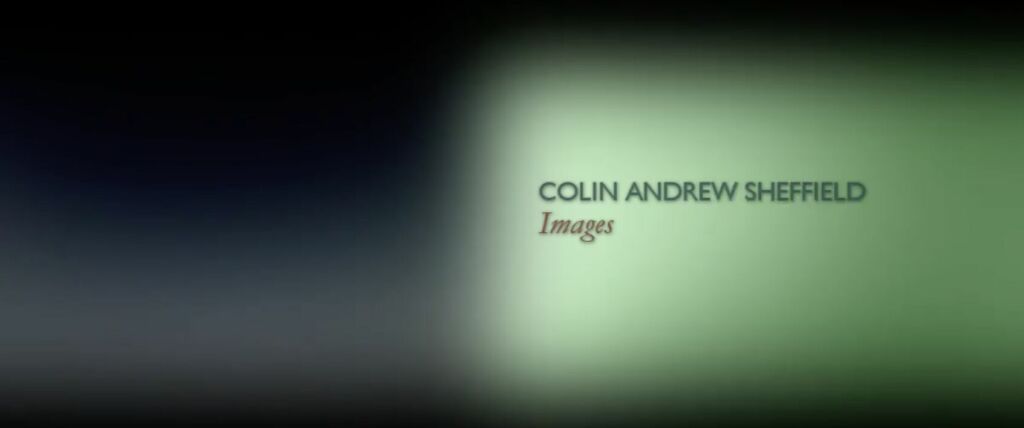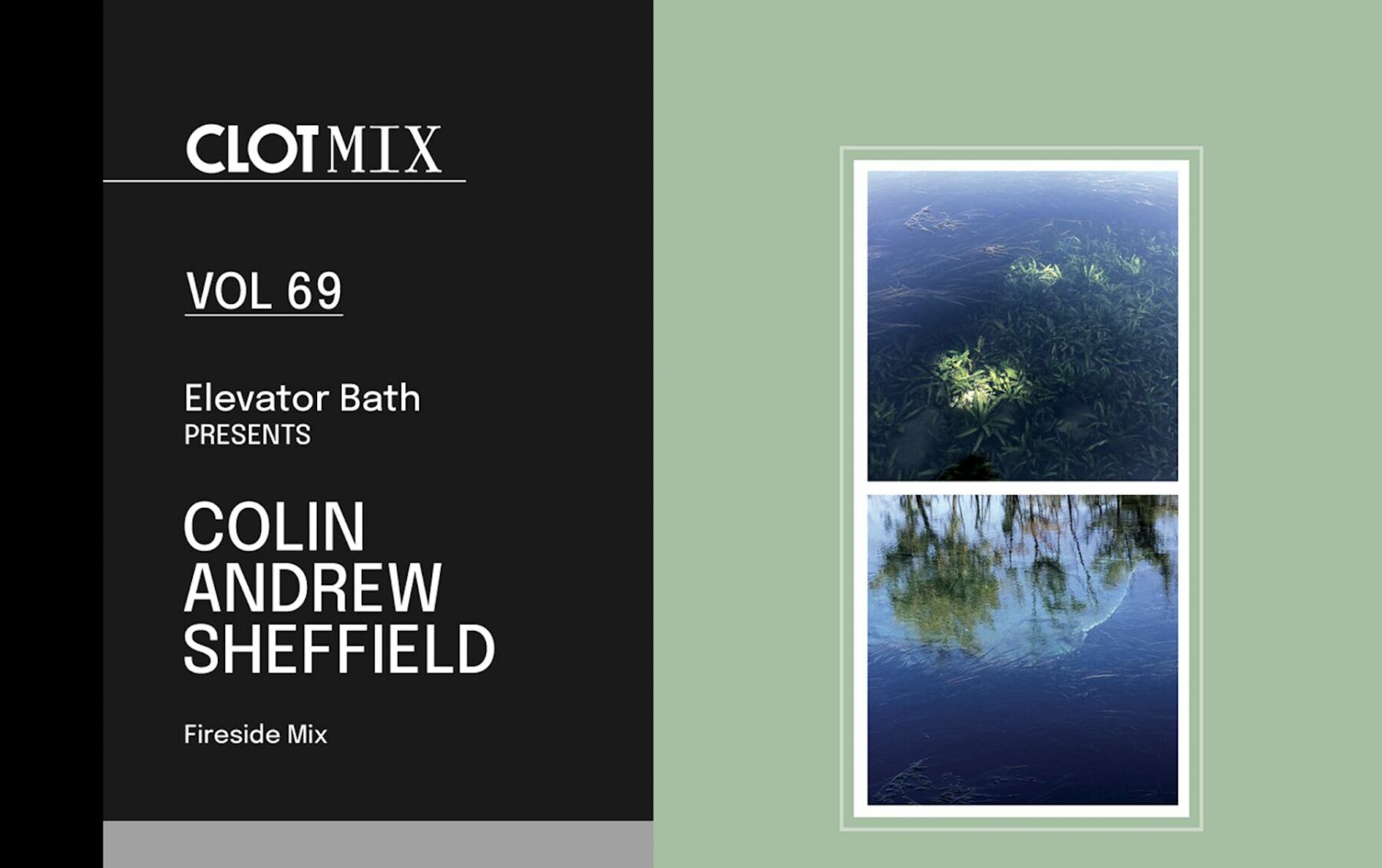Text by CLOT Magazine

The next mixtape instalment is by experimental musician Colin Andrew Sheffield. Born in El Paso and now based in Austin, Sheffield took his passion from being a self-taught drummer in Texas to a total transition to electronic music. For this mix, he’s compiled a captivating selection of experimental electronic music.
Since the mid-90s, Sheffield’s work has consistently focused on the use of samples: deconstructed loops of hidden melodies and textures found in his collection of physical media. Through the re-contextualization of other commercially available recordings, like an alchemist of audio collage, he aims to distil the essential qualities of these works and convert them into new recordings.
Sheffield’s music is full of atmospheric soundscapes, which shift and unfold, offering subtle waves and suspended stillness. From earlier work like First Thus (2005) to the most recent Images (2023), Sheffield’s solo projects showcase his ability to explore diverse sonic ranges. One of our favourite records this year, Images, was entirely constructed from heavily edited and manipulated samples from jazz records and represents a true distillation of Sheffield’s interests as both a composer and an obsessive listener.
In 1998, Sheffield founded the Elevator Bath recording label, which has been releasing experimental works from a variety of artists from the US and abroad, featuring names such as Merzbow, Francisco López, Susane Drone, and himself.
The mixtape he’s prepared for us, he says, was a lot of fun to compile. I limited myself to selections that are all quite recent or at least no more than a few years old. I tried to represent my tastes in various forms of experimental music and throw in a liberal dose of work from some good friends. There are a couple of brand-new tracks in there from forthcoming releases too, so it’s a bit of a taster of things to come. Hopefully, it flows well enough and has something for just about everyone. Thanks for giving me the impetus to create this mix!
You run a record label for experimental music Elevator Bath since 1998, which has a really fine selection of artists. Could you tell us about what was the main aim behind when you started the project and how it has evolved throughout the years? Have your experiences over the years also influenced what the label is now?
As a teenager in the ’80s and ’90s, I was listening to a lot of DIY, punk, and all kinds of independent music. So, I had the notion to start my own label as far back as probably 1992 or so. As my tastes and interests developed over time, I became more and more focused on electronic and experimental work. So, by 1998, I finally had something of a vision for what I wanted my record label to be like, and I got started later that year. The aim then was just to get my foot in the door, so to speak. I published some of my own early experiments (because I knew no one else would), but right away, I also made sure to put out work from other artists in an attempt to establish a label that would be more than just a vanity project. Over the years, it has evolved in many respects, such as overall quality and professionalism. I also have a much stronger sense of the label’s identity and a much clearer idea of the kind of work (and the kinds of artists) I want to be publishing. But it has fundamentally stayed the same in many respects too. For instance, it has always been just me doing practically everything — and that’s possibly even more true now than it was at the beginning.
Also, what is your usual selection process for the label? Is it something more intuitive or thoroughly planned?
I suppose I still rely fairly heavily on intuition when making decisions about what to release. But I also try to plan as carefully as I know how, and my curatorial processes are perhaps a bit more refined than they once were. Essentially, I ask myself three basic questions: 1) Do I truly enjoy the work I’m considering publishing, and do I think I will continue to enjoy it for many years to come? 2) Do I think I can sell the release I’m considering putting out (and hopefully break even financially)? 3) Is the artist in question someone I just want to be associated with to represent Elevator Bath? If the answer to any two of those questions is “yes”, then I’m probably going to go forward with the project at hand. Of course, many other factors may be part of the decision-making process, but every important question generally falls under the headings of the three basic questions.
Your most recent release, Images, is entirely constructed from heavily manipulated samples from jazz records. What was your creative process like for the album production? Was it different to your previous compositions? Was it more conceptually driven or more based on the sound exploration?
Yes, my creative process for this album was quite rigorous, believe it or not — more so than with most of my previous efforts. I went through a series of stages figuring out what types of samples I wanted to use, then finding and isolating those samples (through trial and error), then designing/refining the sounds I’d gathered, then organizing all the sounds, and finally combining them into compositions that seemed to make sense both conceptually and aesthetically. I ended up doing a lot of work for myself, but I rather enjoyed the process, and I am satisfied with the end results. I’m very pleased that you enjoyed the album.
And what were you exploring on the more technical side? You mention your methodology uses early sampling hardware. Any new equipment that you tried for this production?
Back in the ’90s, I did start out by making tape loops before I had any gear at all. I used regular cassettes and also a reel-to-reel machine. I just wanted to play with sound, and repetition has always appealed to me aesthetically. I eventually bought a 16-bit sampler, which I still have and still use to this day. So that’s my “early sampling hardware.” The way I record has changed a lot over time, though. I love the tactile nature of my old sampler, but I now record on a computer and do most of the editing with software. And that aspect of my process is ever-changing as I get new plug-ins or try out new programs. I did recently obtain a new controller, which I’m hoping to play out with more and more, though it does not feature in any of my recordings so far.
What are your main inspirations for your artistic practice these days?
I get inspired by artist friends of mine who are doing good work. And by other artists, even if I don’t know them personally (see the mix). I suppose it’s my competitive streak, though I’m not trying to outdo anyone. I just want to keep apace with artists I admire and be a contributing part of a larger community. It may sound trite, but I’m also simply trying to make music that I want to listen to. There are certain elements and approaches to sound that I love but don’t often hear in many other artists’ work. So, I’m trying to satisfy myself. I have an insatiable desire to find new music, and that has held my interest all this time. I’m still looking for the magic.
What have you been most excited about recently about the Texas/Austin experimental scene?
I’m excited about how much is going on here these days. The scene(s) in Texas, especially in Austin, have grown exponentially over the last 10 years or so. It’s pretty amazing. An ambitious artist could potentially play out seven nights a week. There’s always something going on. When I was starting out more than 25 years ago, experimental music live shows here were very few and far between, to say the least. I never imagined that there would be so many opportunities to perform and meet other people interested in this work. I’m just grateful to all those making these events happen, night after night.
What is your relationship with technology nowadays, and how do you deal with technology (screen/digital) overload?
Practically every aspect of my life involves staring at either a computer or phone or both. And that can be a bit depressing at times. But you take the good with the bad. Nevertheless, it’s nice to be able to “touch grass” often. My wife and I go for walks in our neighbourhood most days, for example. I love to spend time with our dogs. I love to read actual books. And I also love to cook, so that usually gets me away from the computer a few times a day. It can be a balancing act for sure, though!






